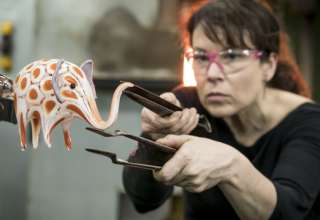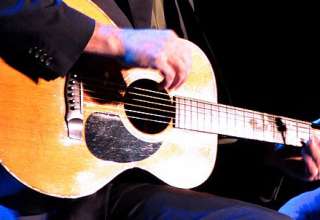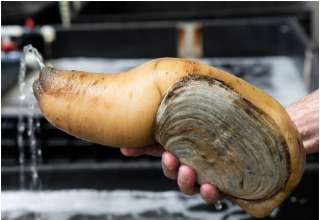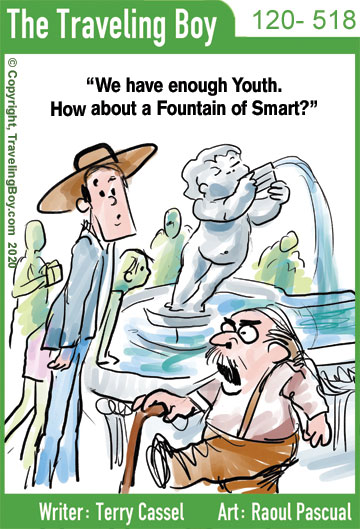Curated by Ed Boitano
The T-Boy Society of Film & Music’s latest poll is dedicated to the Friendliest Destinations in the World. As you can see from our members’ selections it could be a village, town, province, state, region or even a neighborhood within a destination. We felt it appropriate to have a positive, feel-good segment as opposed to all the ongoing negative news that we are bombarded with on a daily basis. May we all reflect on Mark Twain’s uplifting line: Kindness is a language which the deaf can hear and the blind can read. With that in mind, here is the T-Boy Society of Film & Music’s Friendliest Destinations in the World.
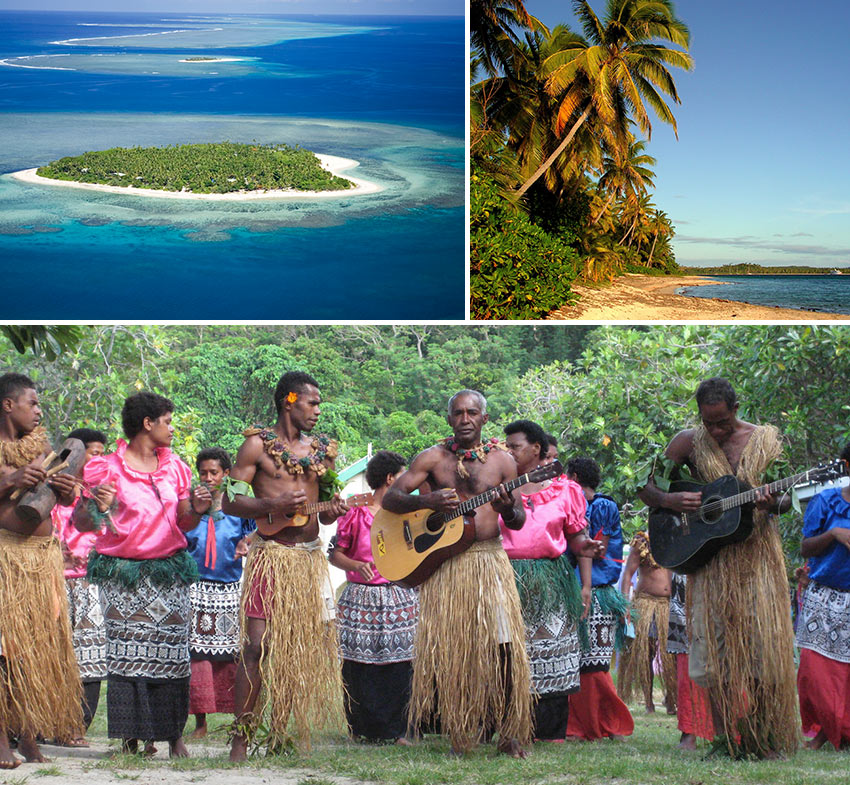
Richard Carroll — T-Boy Writer:
Fiji — A small island nation in the South Pacific with a distinct personality and a lightness of love that radiates in the endless island breeze, understands the art of hospitality and the mutual enrichment of visitors. The Fijian “Bula” is more than a greeting, it’s a wish for happiness, good health and the energy of life. Strongly family oriented, the native Fijians, born and raised in the country with Melanesian and Polynesian ancestry, are soft spoken, moving easily with the rhythm of the sun and sea and fickle weather patterns, often greet visitors with welcoming smiles and a generous reception that soothes the soul and sets a joyous mood.
London’s Traditional Black Cabs — Flagging down one of London’s traditional black cabs and hooking a ride is where respect for the driver is beyond comprehension. Our last ride in early 2020 the cabbie with great humor sang a little Sinatra for us during a short tour while pointing out numerous little-known hidden treasures. Ranked the world’s best, the cabbies are the elite of London, friendly for sure, with the demeanor of tourism assurance that all is well and you are in good hands. To achieve this high standard of expertise which dates to 1865, they have to master “The Knowledge” entailing 320 routes, 25,000 streets and 20,000 landmarks, which takes between two to four years to complete with a series of difficult written and oral tests, and a demanding driving exam. GPS’s are forbidden because the cabbies have one implanted in their heads, while some studies revealing their brains are larger in regards to memorizing The Knowledge. Asking them questions about London is great fun and informative too and like opening a foot-thick library dictionary.
Ireland — Driving through the Irish countryside and reading the Celtic road signage is challenging, but asking directions you can easily end up in their home with a cup of tea. I found the Irish with their sense of humor and generous affability enjoy sharing with strangers while possessed with an impressive gift of conversation. Their love of music and dance and pub life with nightly sessions performed by excellent musicians is the perfect showcase for Irish hospitality, and friendship, if only for the evening. Driving from Dublin to Belfast visiting small towns and villages I met the friendliest people this side of Fiji all asking, “Where might you be from?”
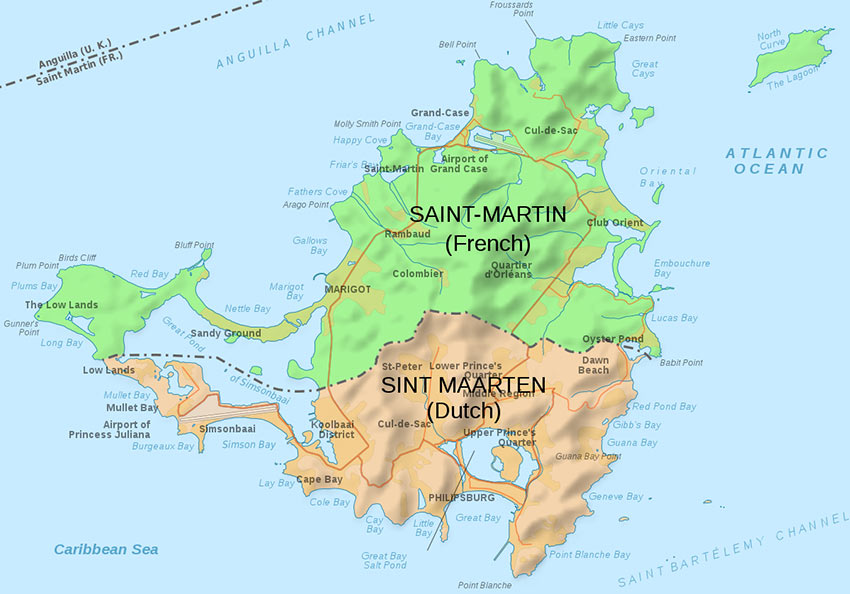
Fyllis Hockman — T-Boy writer:
St. Martin — The Caribbean island of St. Martin is known as The Friendliest Island, and its claim deserves a truth-in-advertising award. Literally three times when we stopped to ask directions (a common occurrence as road signs are basically non-existent), the guy got into the car and took us to our destination. And not once did we get robbed or even asked for a tip, a de rigueur practice in many other Caribbean islands. That was friendly enough for us.
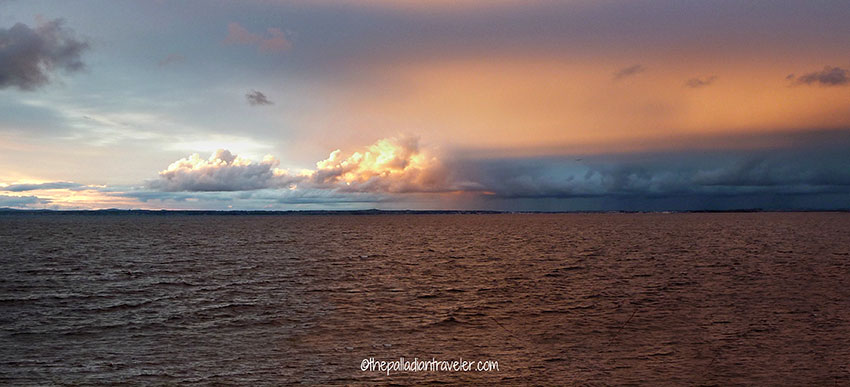
Tom Weber — T-Boy writer:
Galway, Ireland — Steeped in history — her roots go back to the early 12th century — Galway is a prosperous bohemian, artsy cosmopolitan city.
Widely considered the Emerald Isle’s cultural heart, Galway, in a word, is COOL.
How come?
For openers, the sixth most populous city in Ireland is considered one of the “sexiest cities in the world,” one of the “great cities of the world,” one of the “best travel destinations in the world,” and, the foam atop a pint of Guinness, the “friendliest city in the world.” The latter according to readers of Travel + Leisure.
Admired for her vibrant lifestyle, colorful storefronts and pubs, exceptional dining and overall festive nature, Galway plays host to a burgeoning calendar of organized events that attracts visitors from around the globe.
Designated a UNESCO City of Film, she hosts the annual Galway Film Fleadh, the International Arts Festival and the Tulca Festival of Visual Arts.
There’s also the International Mussel and Oyster festivals, and the Gathering of the Boats festival, featuring 100+ uniquely Irish craft, the Galway Hookers.
Why, there’s even the Dip in the Nip, the first-ever skinny dip for charity.
And, that’s just the tip of the iceberg for the city considered by her peers to be the “most Irish” of all.
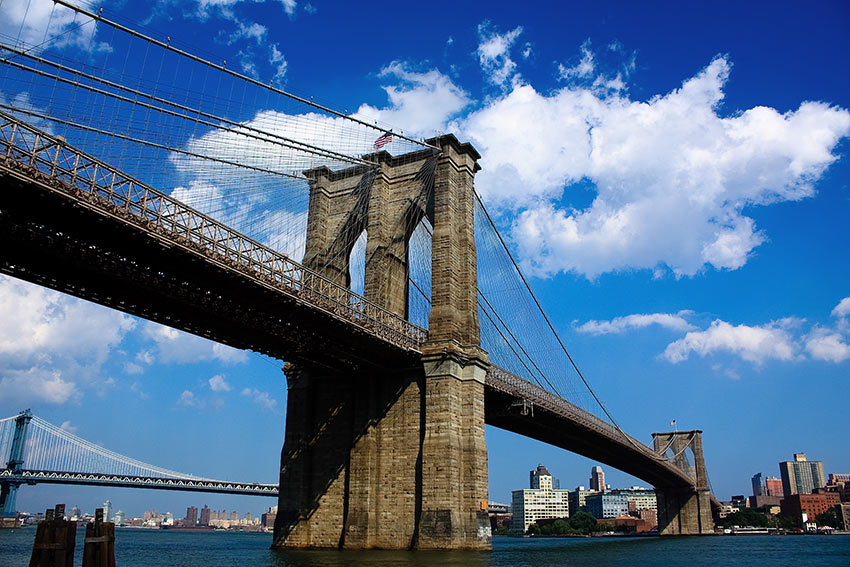
Stephen Brewer — T-Boy writer:
Welcome to New York — If you were to believe some news outlets, New York is either a smoldering heap of rubble or a rat-infested wasteland populated by gun-toting criminals. I’m pleased to report that my beloved city is quite pleasant these days, though I really do miss those annoying tourists who just don’t get the way the checkout lines at Whole Foods work and all those office workers and matinee goers who get in my way when I’m trying walk at a quick pace down Fifth Avenue. I believe we’ll get through this crisis, as we have so many others, that folks will start coming back, and that the city will adjust to challenges ahead in quirky, exciting ways. Because New York is just a wonderful place, and we New Yorkers are pretty resilient.
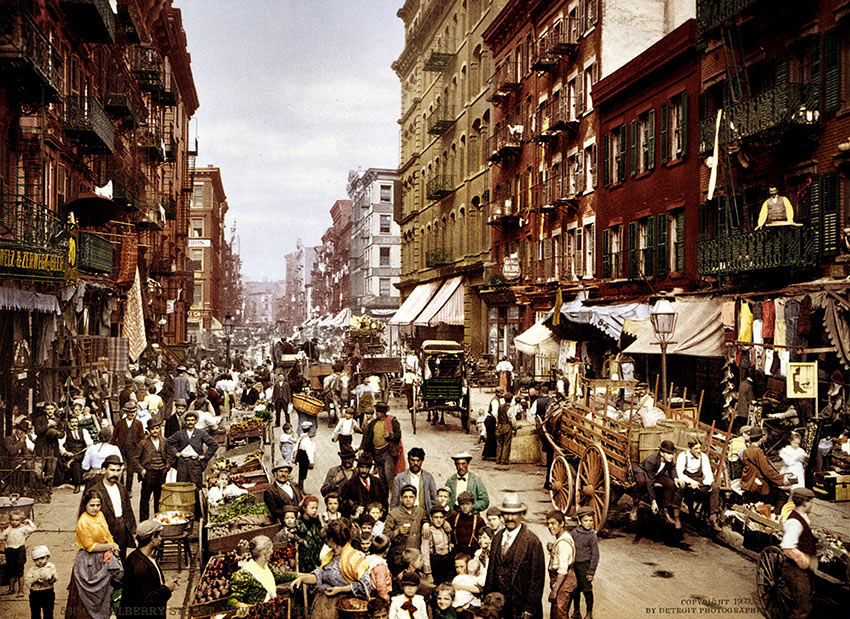
To reassure myself of these facts, I recently indulged in a bit of nostalgia and walked up to the West 80s. This is where I lived when I came to New York 40 years ago, in an old building that was home to many residents who had been there for half a century or more. In those big, rambling, high-ceilinged rooms that in the 1970s were quite affordable I decided that New York was the only place I ever wanted to live. The streets are eerily empty in these days of self-isolation, but back then the old-timers, as I called them, would bring their folding lawn chairs down to the sidewalk to sit in the sun and watch the neighborhood comings and goings. The de facto leader of the group, Mildred, was my next-door neighbor. I came to rely on Mildred for the latest news and gossip, which she was always eager to impart over a few highballs. It was Mildred who informed me that the super had used three cans of Bon Ami to get the blood off the sidewalk after a late-night knife fight on our corner. Such occurrences, and even some more violent ones, were not uncommon on the then-still-gentrifying Upper West Side. One night the cook at our local diner shot a waitress to death just beneath our windows, then turned the gun on himself. “In a jealous rage,” Mildred confided to me the next evening, adding, “Frankly, he was a terrible cook and she was a two-timing tart.”

No event, though, topped the demise of a poor fellow who jumped from a top floor window of the high rise across the street. The sidewalk sitters had been right there, lined up in their lawn chairs, witnessing it all, the leap, the plunge, the gruesome carnage on the street. “His head damn near rolled into our lobby,” Mildred informed me when I rounded the corner from the subway. “That’s his arm hanging from that branch over there,” Harry Stein added, though I did not follow the line of his pointed finger.
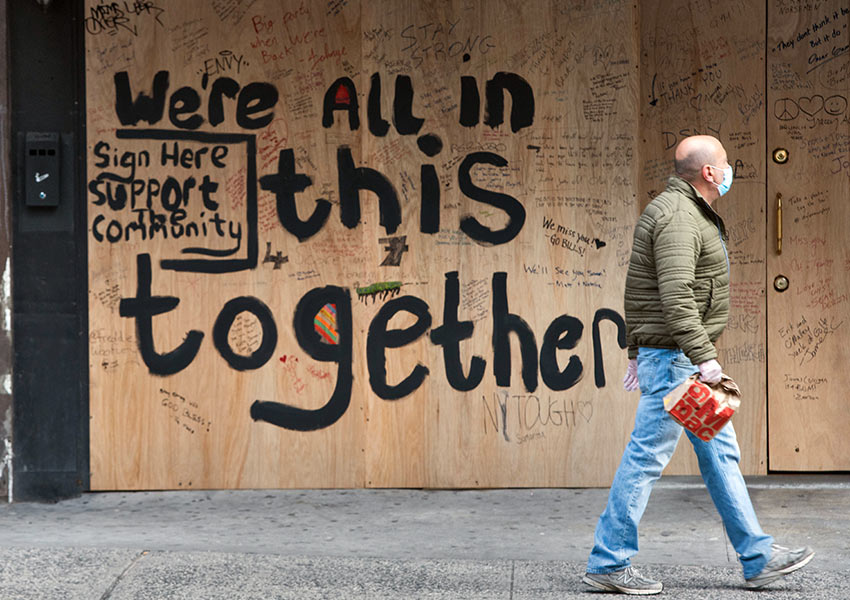
I can only wonder if my old neighbors would be as blasé about the Covid crisis. Would some of them have succumbed? Most of my old neighbors slipped away relatively peacefully. Harry spent his last days in Brooklyn, living with a daughter after a cast-iron skillet fell out of Mrs. Kahn’s window and shattered his femur. Mildred was not convinced it was an accident. “I don’t know what she was doing with a skillet, because she doesn’t even know how to make toast,” she sniped. Sweet, elegant Lillian dropped dead of a heart attack at a dinner party, with Mildred in attendance. “The best damn grilled lamb chops and those little buttered peas,” the ever-practical Mildred lamented, “and I couldn’t go on eating, could I, with Lilly’s corpse right there on the dining room floor?” Mildred died of old age in a nursing home in Queens. Her send off was a sadly stilted, canned service in a funeral home chapel on West 72nd Street at which the officiate referred to her as Millie, a nickname she loathed, and asserted that she never had an unkind word for anyone. I was thinking fondly about that old crew as I sat on the steps of the building across the street (the one of the defenestration incident) and looked over to the sadly empty sidewalk in front of my old doorway. Two young guys walked by, glanced at me, and delivered the mantra of our times, “Stay safe.” Then it occurred to me that now I was an old sidewalk sitter, too, and with my unkempt white hair and weird-looking mask, a pretty wild-looking one at that. But honestly, I’m not an antifa terrorist, and if you come to New York, I and millions of my fellow citizens are here to show you that out city is still a pretty nice place to be.
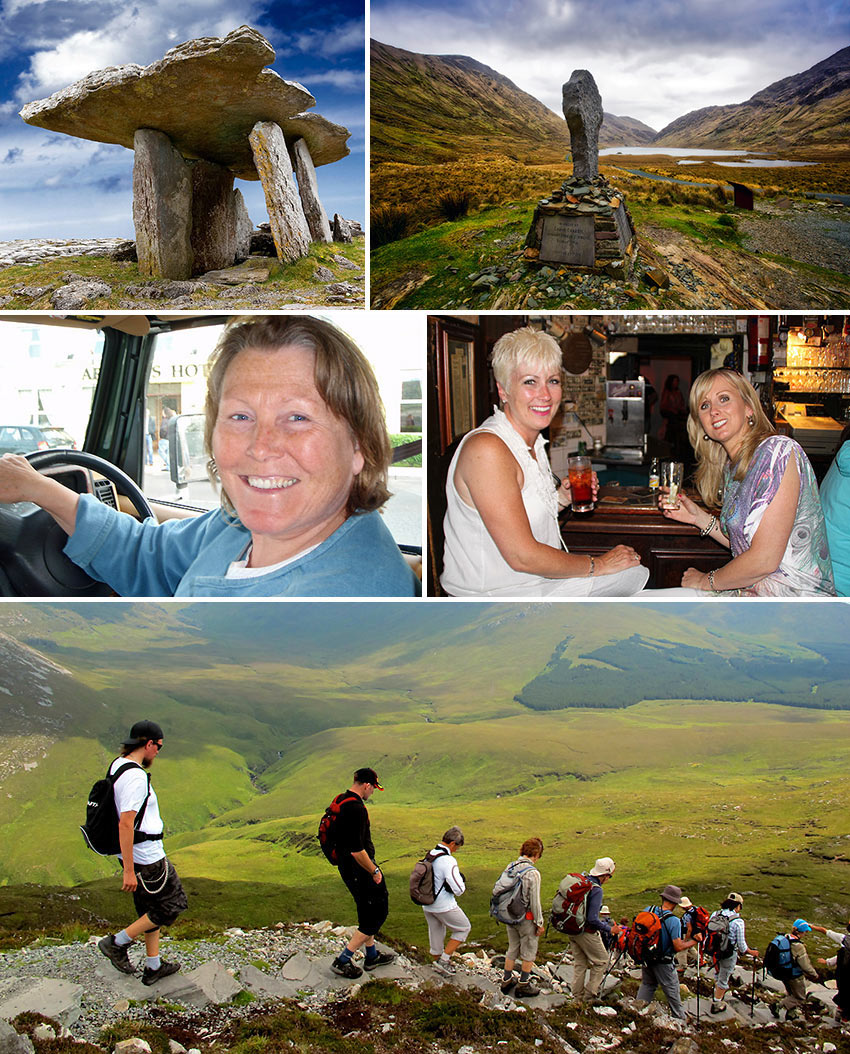
Ed Boitano — T-Boy editor:
The Western Counties of Ireland — My wife and I woke up to the smell of rich morning coffee. It was to be part of our breakfast on our first day in Ireland. It has been said that all Irish homes become a bed and breakfast during the summer, and this Donegal County cottage with one spare room was no exception. The owners fussed over us at the table as we enjoyed a full Irish breakfast: eggs, bacon, sausages, black and white pudding, fried potatoes, and homemade rolls with marmalade. With poetry in their eyes and hospitality in their hearts, they weaved a heartfelt narrative of the area’s attractions and educated us on the Great Irish Potato Famine that began in 1845 and lasted for six years, killing over a million men, women and children and causing another million to flee the country. They explained that the Irish were pushed out to the barren, twisted rocks of the Western Atlantic countryside and began to live off wild blackberries, nettles, turnips, decayed cabbage leaves, seaweed, roots, roadside weeds, and, towards the end of the Famine, even green grass. They added you could always identify a Famine victim by the green grass stains around their mouth. Our Irish hosts spoke with such passion and magnitude that it felt like it was happening today. We followed their instructions and found a Famine Pot in the middle of a forest, where locals placed food they could spare for the displaced victims. It was as if we were taking a walk through living history.
Two days later, it was a drive through the sweeping hills of the Connemara in County Galway, a landscape once described as a place of ‘terrible beauty.’ We pulled off the road to study a Famine Trail. Known as the Doolough Tragedy of 1849, scores of destitute and starving people staggered through horrendous weather for 15 miles to a manor’s house in the hope of food, only to be turned away. Apparently, the grand man of the manor did not want to interrupt his lunch and never met them. Later, corpses were found by the side of the path with grass in their mouths. Too weak to walk or speak, many were crawling to churches so that they could be laid to rest on consecrated ground. Once a year a Famine Walk takes place on the trail to commemorate the victims.
As we departed down the road, we both commented that we had not seen a single car for over half an hour. A second later there was a rumbling on the road. We had a flat, not unusual on these rock-strewn Irish roads for clueless tourists. Faced with having to unpack our little rental just to find the spare tire and equipment was a daunting thought. Before we knew it, two cars, each arriving from the opposite direction, appeared out of nowhere. The drivers both hopped out and quickly changed our tire. They barely stuck around for a handshake. Such is the hospitality of the Irish. Stranger or friend, they were always willing to offer the hand of kindness.
Eventually we made it down to the musical town of Doolin, a coastal fishing village in County Clare on the Atlantic coast. Coined the traditional music capital of Ireland, this was for us an adult Disneyland. An assortment of pubs specialized in Irish session music each night. We were made to feel welcome as we joined in with locals, and nursed pints of Guinness as we listened to reels, jigs and haunting ballads, many about the Famine and emigration. We carry these precious memories with us wherever we go. Erin Go Bragh!
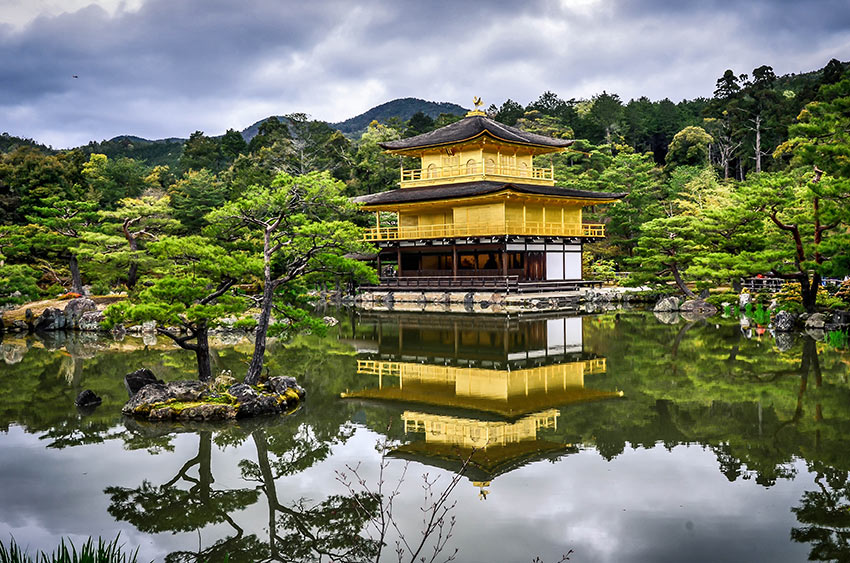
T.E. Mattox — T-Boy music critic:
Kyōto, Japan — The history, the shrines, the gardens, the people. Great place to honeymoon.
Cannes, France — Go mid-to-late November. Every restaurant and bar celebrates the Nouveau Beaujolais.
Clarksdale, Mississippi. — Everyone gathers for the music; everyone leaves as friends. Blues is a healer.
Le Grazie, Italy — This is every sleepy, little fishing village photo you’ve ever seen. A step back in time.
Vancouver, BC — The city is multi-cultural and walkable with a young vibe. Spent days in Lord Stanley’s park.
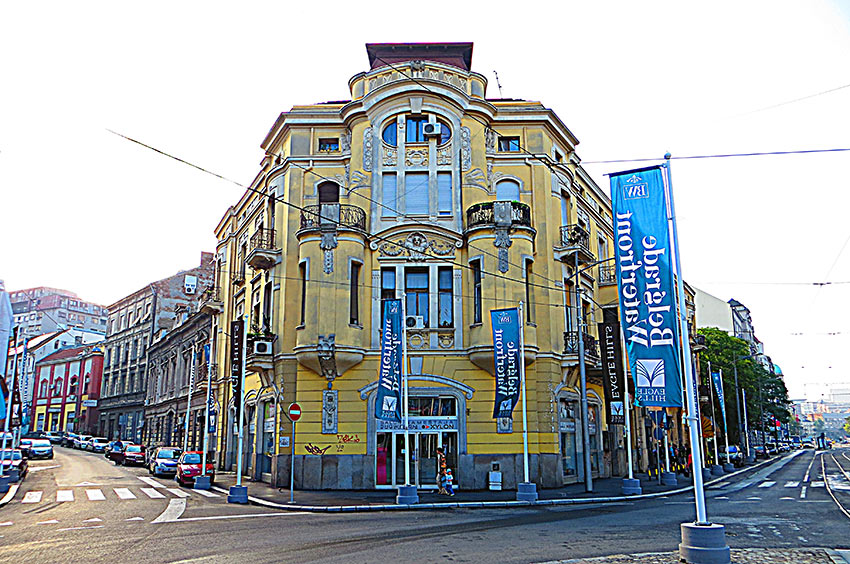
James Boitano — T-Boy writer:
Serbia — Asking directions often leads to being offered a ride, a friendly conversation or even an invitation.
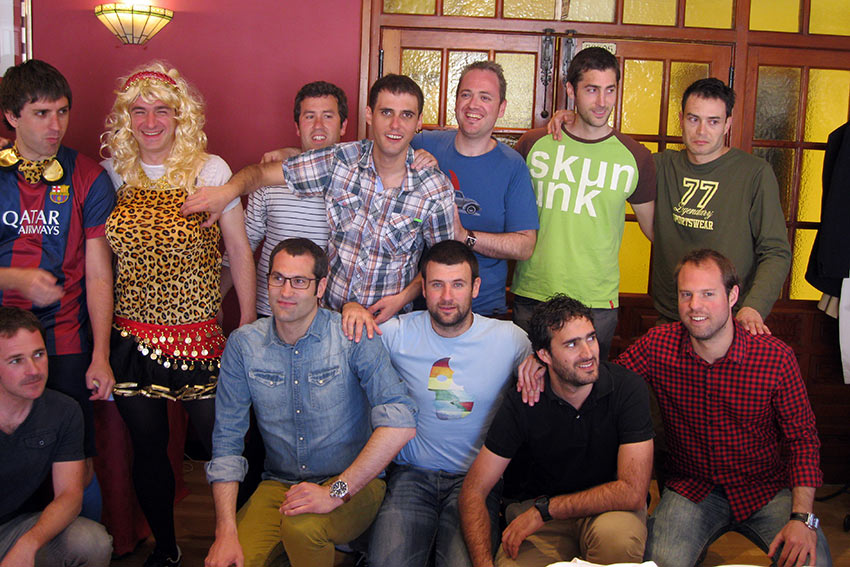
Richard Frisbie — T-Boy writer:
I hear places like New Zealand, Tahiti, and the Philippines, are the world’s friendliest places, but I’ve never been to them, so can only assume they are. The friendliest place I’ve been is Spain. Time and again my visits are greeted with smiles and warm welcomes. Even a recent visit to Cancun was extra special because the Iberostar Grand’s manager was from Bilbao, Spain. We shared many things in common, and even some friends!
Most memorable was my first visit to Galicia, Spain. I got secret family recipes, friendly tours, and I met people I’d see again and again on future visits. When I expressed my love of Galicia — the people and the food & wine — my new friend (guide) said it was because they were my people; that my Irish ancestors had settled here so it was like coming home for me.
On my last (pre-COVID-19) visit to the Castilla y Leon city of Villadolid, in Spain, a good friend took me to his favorite bar where everyone sang Happy Birthday to me — people I’d just met! What a great feeling to be so embraced by the warmth of the Spanish people.
One other place to mention is France. I spent ten days in the Champagne region and met the nicest people. They shared great food, bubbly, and warm stories of their experiences with Americans in their country. My visit was only marred by a radio interview I gave in Paris on the day I was leaving. The host tried to get me to say disparaging things about my visit. It was clear he had an agenda — Americans thought the French rude while the French thought Americans loud, coarse and obnoxious. It is obviously a Paris thing, so I remembered the people of the countryside and praised them. In the end he was sorry he’d taken that tack. He sounded foolish. I’d go back, but only if Spain isn’t open!
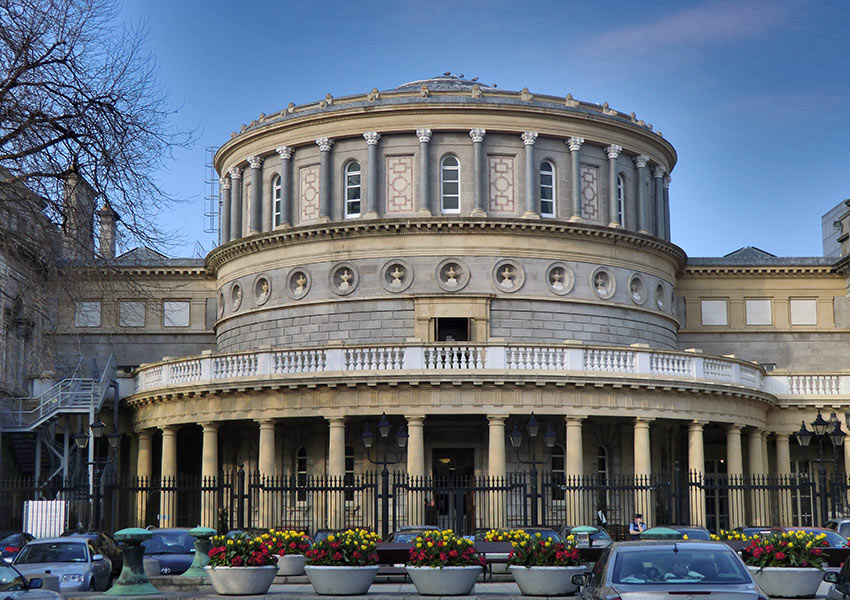
Greg Aragon — T-Boy writer:
One of the friendliest places I’ve been to in the last couple years is Ireland. This little island of magical castles, green hills, idyllic towns and rolling rivers is also populated with some of the nicest people. It seemed there everywhere I went on this trip, there was someone offering to help and offer advice
On my last visit to the Emerald Isle my friend and I were assisted by a friendly local the moment we exited the plane at Dublin Airport. Here, a fellow passenger who lives in Ireland, showed us where the rental car office was located, and then gave us detailed directions to our hotel and a few sightseeing tips for our upcoming trip down the southern coast.
Once at the Harcourt Hotel in Dublin, the staff was super nice and gave us advice on touring the city and seeing the magnificent Norman/Gothic-influenced Christ Church Cathedral, built in 1038; the Dublin Castle built in 1208; and the moat-surrounded Drimnagh Castle.
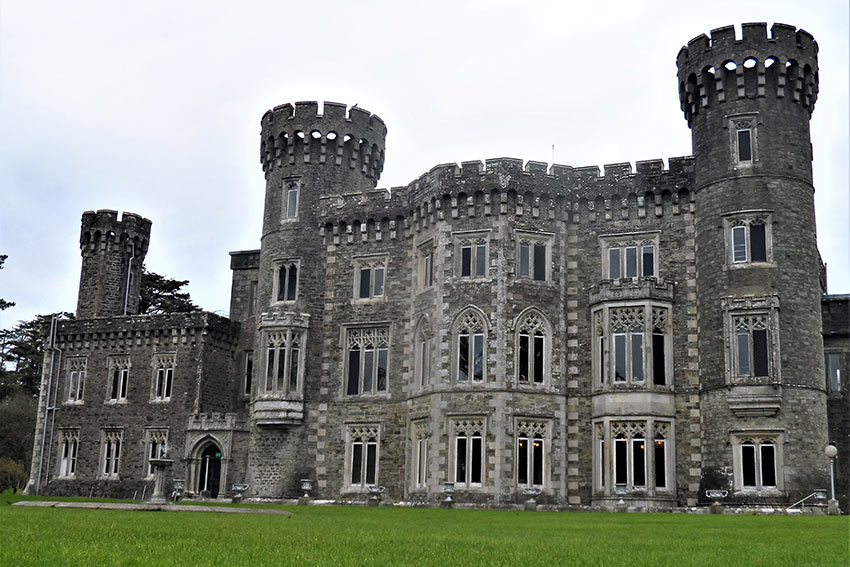
After a night of pub-hopping, we followed the Irish Sea to the Port of Wexford. Along the way we traversed rolling green hills, speckled with thousands of fluffy white sheep and herds of slow-moving cattle. At a rest stop, we met a family that told us to visit the mysterious Johnstown Castle, built between the 15th and 18th centuries. This was great advice, as the castle was a highlight of our trip.
Eerie and beautiful, the gothic revival-styled Johnstown Castle welcomed us with giant stone turrets, lush ornamental gardens and a serene lake. The gardens are a popular destination for walks and picnics.
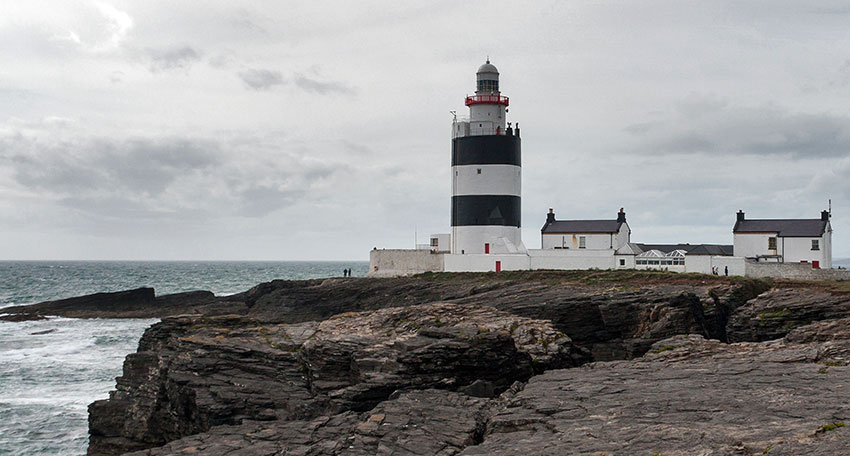
From the castle we drove to the storybook County of Wexford, where we checked into our hotel and met some Irish business people who invited us for a pint of beer and told us all about the city. They suggested we see local attractions such as Kennedy Park, Tintern Abbey, The Dunbrody Famine Ship, and Hook Lighthouse. The lighthouse is the world’s oldest working lighthouse.
The next morning we had a tasty Irish breakfast of smoked salmon, eggs, sausage and bread, and met some fellow guests who told us about a B&B in the seaside village of Youghal, the home of Sir Walter Raleigh. We took this advice and had a memorable stay.
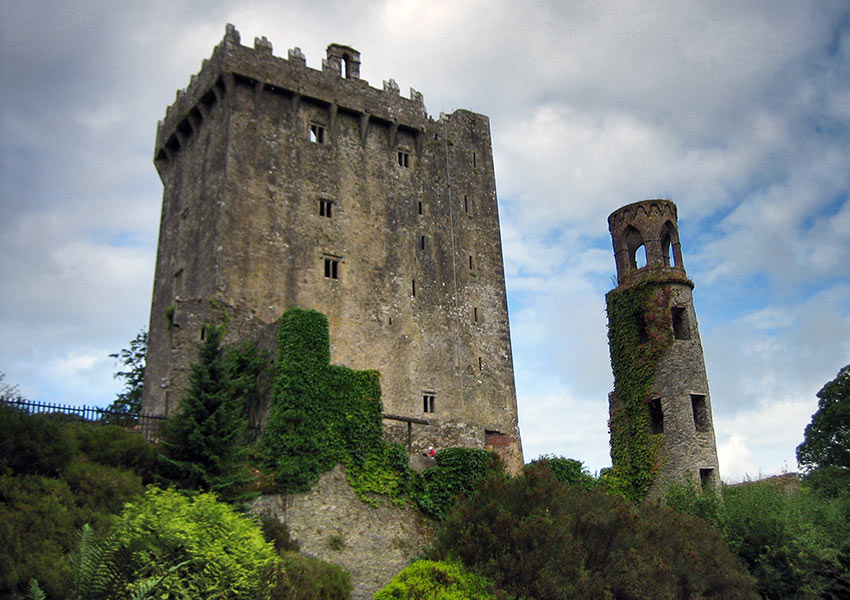
Our next stop was the 600-yr-old Blarney Castle, where I kissed the legendary Blarney Stone, and met more friendly locals who told us to make sure and visit the Midleton Distillery in County Cork. Our last Irish night was spent at Andy’s B&B in Nenaugh. This charming little place felt like staying at a friend’s house. Everyone was super friendly and there was piano player in the bar who led patrons on rousing sing-alongs such as Sweet Caroline by Neil Diamond.
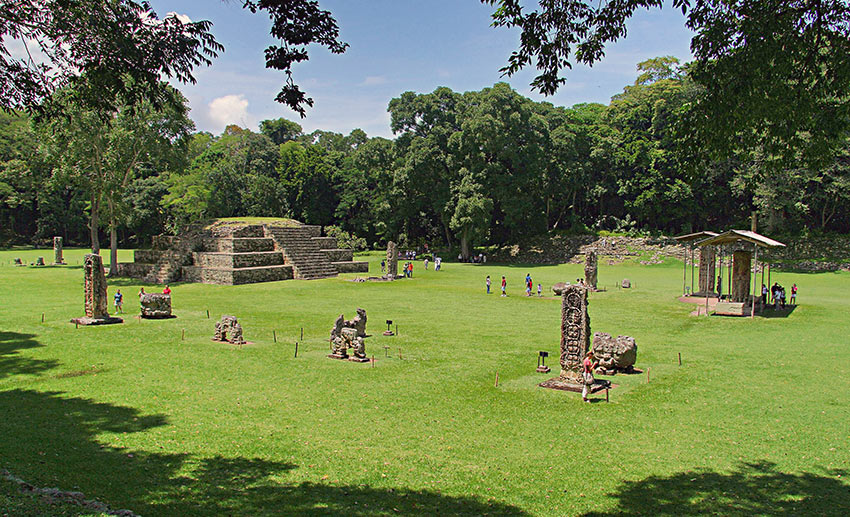
Raudi Benscoter:
Copán, Honduras — Everyone is super friendly, helpful and informative.
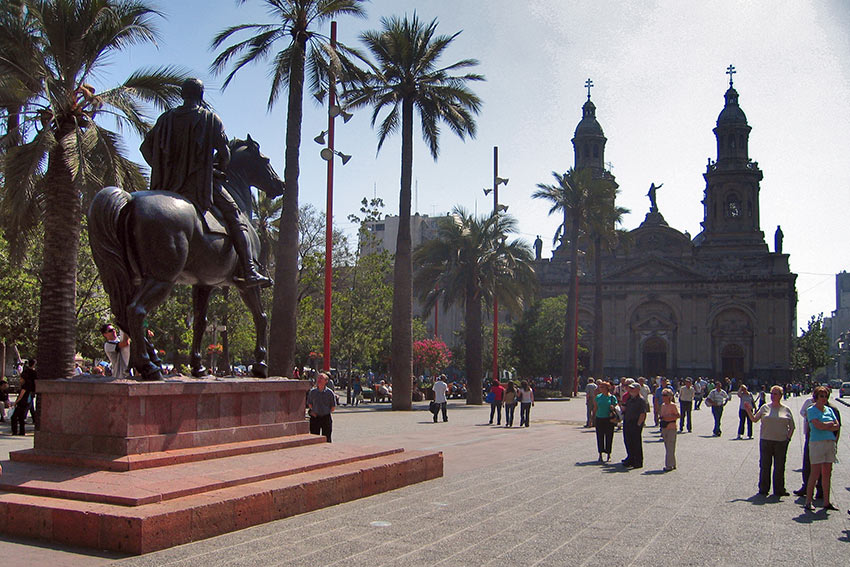
Ringo Boitano — T-Boy writer:
Santiago, Chile — The dapper man in a suit with briefcase, barely concealed his smile when we asked in bad Spanish if this was the train to Santiago’s City Center. He expressed interest in our narrative, and seemed pleased that we had traveled so far to see his county. He promptly paid for our faire, and when we protested, said in perfect English that you are guests in my country and it is my obligation to host you. The trek to Santiago was fulfilling, where he attentively listened to our itinerary, suggesting easy walking tips to other nearby attractions. He warned us that we might briefly suffer from altitude sickness due Santiago’s lofty position in the Andes. He was right; and we grabbed a park bench overlooking the iconic neoclassical Catedral de Santiago, and alternated between pre-Covid deep breathing and watching the cosmopolitan city come to life at the city’s center, Plaza de Armas. We noticed that citizens sense of formality is one of politeness, but never one of evasiveness. While examining a restaurant’s menu for native Amerindian and Spanish dishes — humitas (corn that is pureed and cooked in corn husks) and pastel de choclo (a corn and meat pie) — a man walked past us and quietly said, Good restaurant. Later, and lost again, we would enter a shop and ask for directions to another area. Our answers were always conveyed in written form on a clean piece of paper, just to be sure that we didn’t miss a thing. A few years later I caught an interview with singer/composer, Cyndi Lauper who had just returned for a world concert tour. She was asked what was her favorite country to tour. Like Audrey Hepburn in Roman Holiday she said, Chile, definitely Chile! Her announcement was met with disbelief by the clueless entertainment journalist. Chile! Why Chile? Here reply was brief and simple, Because of the kindness of the people.
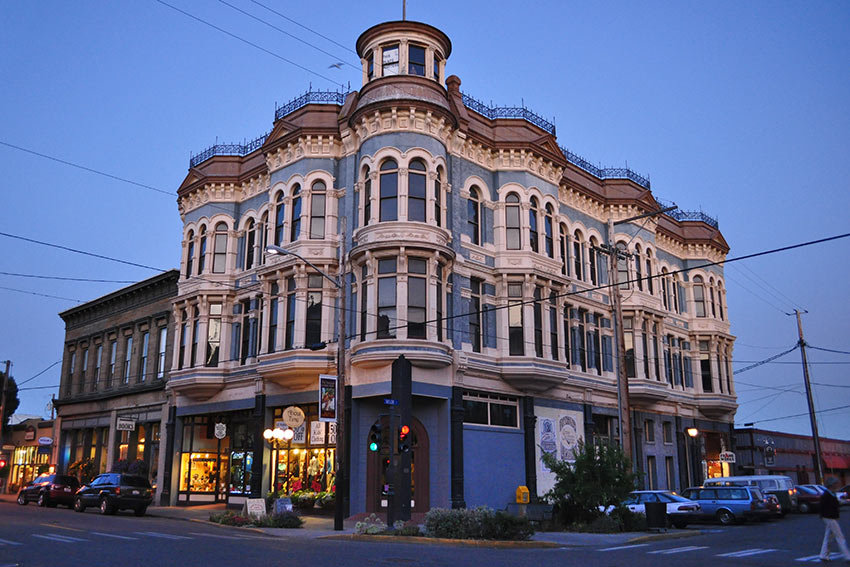
Annie Brouwer — T-Boy writer:
Port Townsend, Washington State — I remember in Port Townsend thinking ‘wow’ — everyone is really friendly here 🙂

Roger Fallihee — T-Boy writer:
Oddly enough I’ve found Manhattan to be a very friendly place. It’s obviously hectic but I’ve found the people of NYC to be very friendly and helpful. Always willing to recommend restaurants, give directions, etc. Even the rowdy fans at Yankee Stadium are cool.
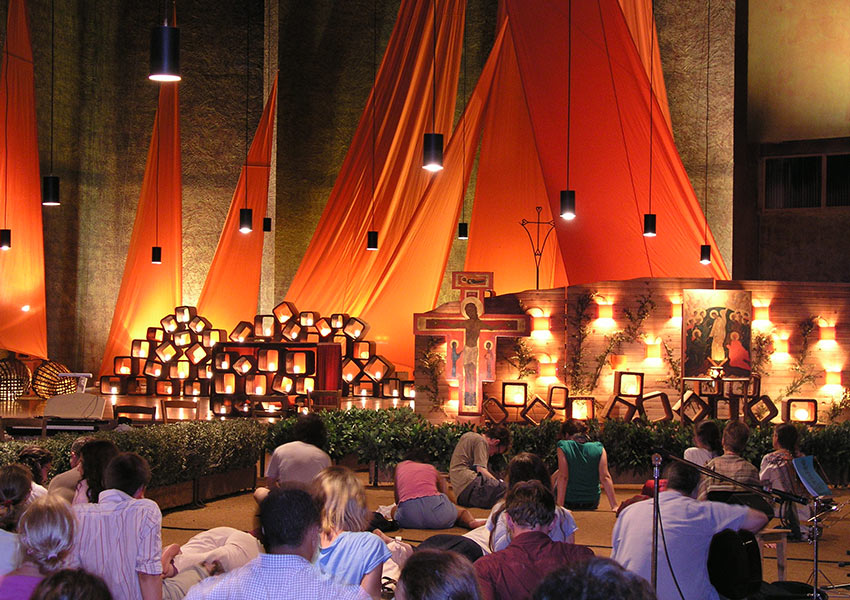
Alex Brouwer — T-Boy writer:
Taizé Community, France — What began as a house for refugees after WWII has become a monastic community that draws thousands of young people from across the globe each year who participate in communal life. The community stands for peace, unity, kindness, and reconciliation and as far as I know is the only monastic tradition officially recognized by all three historical branches of Christianity: Orthodox, Catholic, and Protestant. During only a week there, I was told by many people of vastly different backgrounds and religious beliefs that Taizé is one place they truly feel at home.
Peru — As a stranger and a foreigner, I was welcomed into a family and a community that was not my own. I’ll always be grateful for that.
Mexico City, Mexico — I remember the friendliness and kindness of all the people we met in CDMX, especially one woman who gave us directions, waited for the bus, paid for our ride, and inexplicably gifted us her bus card despite our refusals.
Ireland — During both my trips to Ireland, I found it easy to strike up conversations with just about anyone.
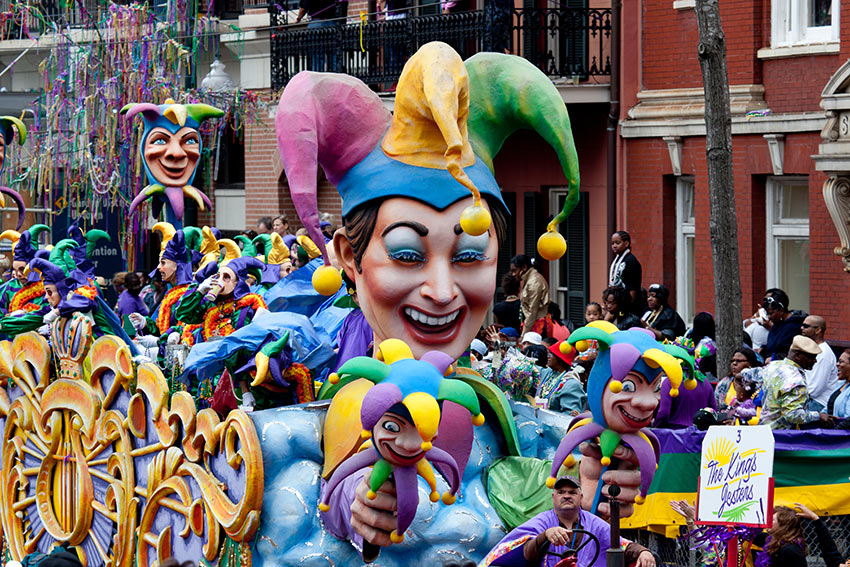
Barb Boitano:
New Orleans and Puerto Vallarta, Mexico — Though both destinations are very touristic, I’ve always found the people to be warm and welcoming, even during Mardi Gras.
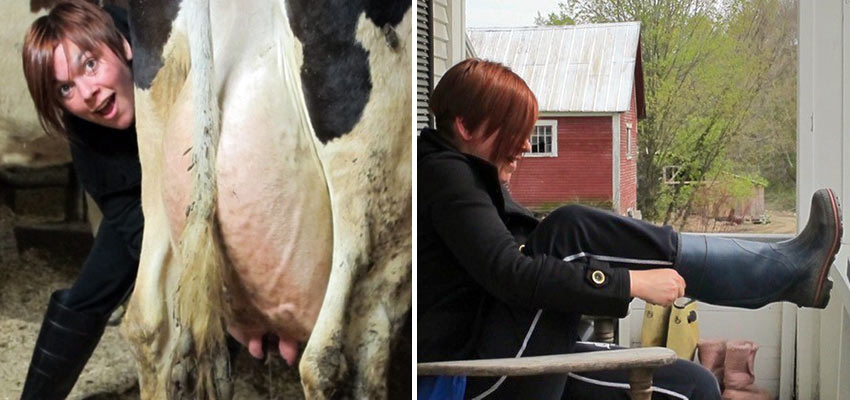
ROURKE — Composer and Musician:
Hawaii — How can you not be friendly in Hawaii? A few days before our wedding, we took a taxi from Wailea to Lahaina. It was a long, traffic clogged drive, in a taxi that was breaking down, but with the friendliest taxi driver, who a week later sent us a text about our marriage.
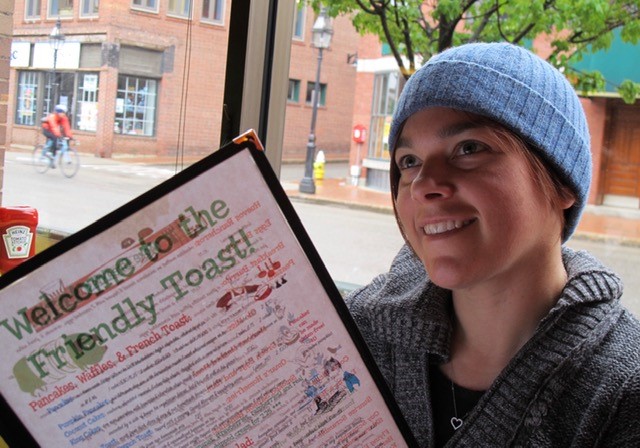
Vermont — Driving through the more rural areas of the state, we met a local dairy farmer who invited us to spend the night on his small dairy farm. His wife cooked dinner for us, using wild fiddlehead ferns from the hills behind the farm. Breakfast on a farm was just like this city slicker always imagined it would be.
New Hampshire — With a diner in Bedford called “The Friendly Toast,” need I say more….
Vancouver
Puerto Rico

